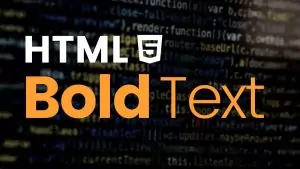Understanding HTML basics is key to mastering web development. One essential HTML element that often goes unnoticed is the <br> tag. This article delves into the role and application of the <br> element in HTML code.
Understanding the <br> Element
The <br> stands for “line break” and is used to insert a break between lines of text. Essentially, it is the line break HTML element that causes the text to move to the next line, ensuring the proper division of lines. Unlike other HTML tags, <br> does not require a closing tag and can be used on its own.
Application in Writing Content
When writing content for web pages, especially long paragraphs or addresses, proper line spacing and division are crucial.
Division of Lines
By using the <br> tag, you can create a division between lines to make text more readable. For instance, when displaying a postal address, the <br> tag can be used to separate the street address, city, and zip code.
Example:
<p>John Doe<br>123 Main St.<br>New York, NY 12345</p>
Line Spacing
Besides the <br> element, the line-height property in CSS can be used to control spacing between lines. However, while line-height sets the vertical space that a line of text covers, <br> is used for breaking lines at specific points.
Text Presentation in HTML Tables
In an HTML table, you may need to present tabular data in an organized manner. The <br> tag can be beneficial in ensuring that content within cells is properly spaced and doesn’t clutter.
Beyond Text: HTML Attributes and Structure
While the <br> tag is primarily used for the division of lines in text, it’s essential to realize that HTML structure involves many other elements and attributes. Knowing when to use HTML attributes and other HTML tags efficiently is key to creating well-structured HTML code.
Conclusion
The <br> tag is a fundamental HTML element, especially when it comes to the division and presentation of text. Whether you are penning a postal address, writing paragraphs, or structuring an HTML table, <br> ensures that your content is presented in a readable and well-organized manner.
FAQ
What is an HTML element?
An HTML element is a component of an HTML (HyperText Markup Language) document. It is used to structure and format the content of a webpage. HTML elements are generally composed of a start tag, content, and an end tag. For example, <p>This is a paragraph.</p> is an HTML element.
How do HTML elements work?
HTML elements work by providing structure and meaning to the content within a webpage. Web browsers read the HTML elements and render them accordingly. For example, the <h1> element is used to define the largest heading on a page, while the <a> element is used to create hyperlinks.
How many HTML elements are there?
As of the last update in HTML5, there are over 100 HTML elements. These include elements for structuring content like <div> and <span>, multimedia elements like <img> and <video>, and form elements like <input> and <button>.
Can I customize HTML elements?
Yes, HTML elements can be customized using attributes within the tags, as well as with CSS (Cascading Style Sheets). For example, you can use the style attribute to add inline CSS or link to an external CSS file to apply custom styles to your HTML elements.
Does the line break element impact SEO or accessibility?
The line break element (<br>) itself does not have a significant impact on SEO. However, excessive use of <br> tags for spacing instead of using proper HTML structure can result in poor content organization, which could negatively affect SEO. In terms of accessibility, using <br> appropriately can improve the readability of content for all users.
Are there any browser compatibility issues with the line break element?
The line break element (<br>) is one of the most basic HTML elements and is supported by all modern web browsers. There are no known compatibility issues with the <br> tag.
How does the line break element affect the structure of a webpage?
The line break element (<br>) is used to insert a line break within text or within an element that contains text. It helps in creating separations within content, such as breaking an address into multiple lines or separating lines within a poem. However, it should be used judiciously and not as a substitute for proper structural elements like <p> for paragraphs and <div> for divisions of content.
Follow us on Reddit for more insights and updates.





Comments (0)
Welcome to A*Help comments!
We’re all about debate and discussion at A*Help.
We value the diverse opinions of users, so you may find points of view that you don’t agree with. And that’s cool. However, there are certain things we’re not OK with: attempts to manipulate our data in any way, for example, or the posting of discriminative, offensive, hateful, or disparaging material.